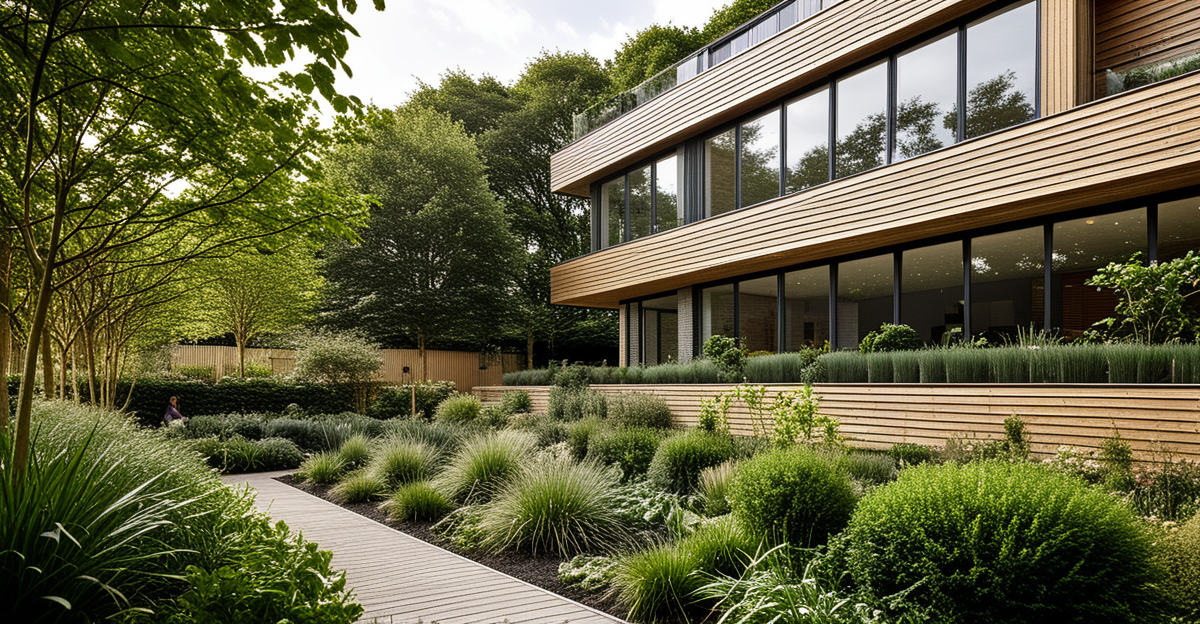Impact of Green Buildings on the UK Real Estate Market
The rise of green buildings UK has triggered a significant transformation in the UK real estate market. Increasingly, developers and investors emphasize sustainability, reflecting growing environmental awareness and regulatory pressures. Statistics show a steady increase in green building certifications, signaling a shift towards eco-friendly construction practices.
This green building impact extends beyond construction methods to reshape traditional real estate practices. For instance, sustainability considerations now influence project planning, materials sourcing, and property management. As demand for energy-efficient and environmentally responsible properties grows, developers integrate features like improved insulation, solar panels, and water-saving systems.
Also read : What Are the Common Misunderstandings in UK Real Estate Investing?
The real estate transformation includes both commercial and residential sectors adapting to this trend. Early adopters of green buildings report benefits such as reduced operational costs and improved market perception. These changes collectively fuel a broader movement toward sustainable urban development within the UK, positioning green buildings as a crucial factor shaping the future of the property market.
Economic Benefits and Property Value Enhancements
Green buildings UK consistently demonstrate a notable green premium, reflected in higher property values and improved investment returns. Research shows sustainable buildings command increased rental yields compared to conventional properties. This green building impact arises from lower operational costs and heightened tenant appeal, making eco-friendly properties attractive to both investors and occupiers.
Also read : How can urbanization trends influence UK property finance strategies?
For example, commercial developments featuring energy-efficient systems often achieve faster lease-up rates, translating into more stable income streams. Residential green buildings similarly experience stronger buyer interest, especially among environmentally conscious occupants. The UK real estate market benefits as these factors contribute to a positive real estate transformation, encouraging wider adoption of green technologies.
Additionally, investment returns on sustainable buildings tend to outperform traditional assets, in part due to regulatory incentives and growing market demand for eco-living spaces. This economic evidence supports the view that embracing green buildings offers tangible financial rewards, reinforcing their role as a strategic asset class within the evolving UK property landscape.
Influences on Buyer and Tenant Demand
The rise of green buildings UK significantly shapes housing demand and tenant preferences in the UK real estate market. A growing portion of buyers and renters actively seek sustainable living environments, motivated by environmental concerns and long-term cost savings. Surveys reveal that eco-friendly features—like energy-efficient appliances and superior insulation—are increasingly decisive factors influencing leasing and purchase decisions.
Analysing market trends, demand for sustainable offices and residential spaces consistently outpaces conventional properties. Tenants show preference for buildings certified with recognized environmental standards, valuing reduced utility bills and healthier indoor air quality. This shift induces developers and landlords to prioritize green amenities to secure occupancy and retain tenants.
Importantly, these preferences create a feedback loop enhancing the green building impact across the sector. Sustainable buildings perform better in tenant retention and command premium rents. This dynamic accelerates the ongoing real estate transformation, as demand for eco-conscious properties rises, further mainstreaming green construction practices within the UK property market.
Regulatory Drivers and Industry Standards
Government policy plays a crucial role in accelerating the growth of green buildings UK within the UK real estate market. The UK government enforces various green building regulations UK aimed at reducing carbon emissions and improving energy efficiency. Key schemes like BREEAM (Building Research Establishment Environmental Assessment Method) and EPC (Energy Performance Certificate) set stringent environmental standards that new developments must meet.
Compliance with these regulations influences the green building impact, encouraging developers to adopt sustainable materials and technologies early in the design phase. For example, BREEAM certification requires assessment in areas such as energy use, water efficiency, and waste management. Achieving these standards not only meets legal obligations but enhances building marketability, supporting the ongoing real estate transformation.
Moreover, these policies often come with incentives, such as tax reliefs or grants, motivating developers to prioritize green features. As a result, industry strategies increasingly integrate regulatory compliance as a core component, shaping project planning and investment decisions across the UK’s property sector. This regulatory framework ensures that sustainability remains central to development trends and market evolution.
Impact of Green Buildings on the UK Real Estate Market
The rise of green buildings UK marks a pivotal moment in the UK real estate market, reflecting widespread shifts in development priorities. Recent statistics reveal a steady surge in eco-friendly construction projects, underscoring the growing green building impact. This momentum signals a clear departure from traditional property development, as sustainability becomes a core focus.
Developers now prioritise energy efficiency, water conservation, and low-carbon materials early in design phases. This shift prompts a real estate transformation where conventional practices adapt to include green technology and environmental assessments. Consequently, projects increasingly integrate features such as solar panels, smart heating systems, and enhanced insulation.
Early adopters in both commercial and residential sectors report tangible benefits, including lower operational costs and elevated marketability. These advantages validate the green building impact and encourage a wider market embrace. As sustainability becomes embedded in building standards and consumer expectations, the UK real estate market moves toward a future where green buildings are central to industry success.
Impact of Green Buildings on the UK Real Estate Market
The green building impact on the UK real estate market is evident through a rising number of projects incorporating sustainable design. Recent data shows certification rates for green buildings UK steadily increasing, highlighting the sector’s commitment to reducing environmental footprints. This growth reflects a deliberate real estate transformation where energy efficiency, low-carbon materials, and water conservation become vital criteria.
This shift alters traditional property development methods. Developers now integrate sustainability from the earliest planning stages to meet market demand and regulatory expectations. For example, many projects embed smart heating systems and enhanced insulation to improve energy performance and occupant comfort, positively influencing value and appeal.
Moreover, the rising prominence of green buildings UK encourages broader adoption of eco-friendly standards across residential and commercial sectors. The long-term green building impact extends to operational savings and stronger market positioning, motivating stakeholders to embrace this progressive approach within the evolving UK real estate market.
Impact of Green Buildings on the UK Real Estate Market
The growth of green buildings UK continues to reshape the UK real estate market by embedding sustainability at its core. Recent data reveal a notable increase in green building certifications, reflecting stronger developer commitment to energy efficiency and environmental stewardship. This trend drives a profound real estate transformation, shifting construction and management priorities toward low-carbon materials and advanced water-saving technologies.
The green building impact extends beyond physical assets—developers now incorporate sustainability goals early on, influencing design, procurement, and long-term maintenance. Traditional real estate methods evolve to accommodate smarter energy use and healthier indoor environments, meeting regulatory demands and rising consumer expectations.
For example, projects integrating solar power and enhanced insulation set new benchmarks in operational efficiency and tenant satisfaction. The green building impact also attracts forward-thinking investors prioritising resilience and market appeal. As these practices become mainstream, the UK real estate market witnesses not only environmental benefits but also improved asset valuation and tenant retention, cementing sustainability as a cornerstone of future property development.







